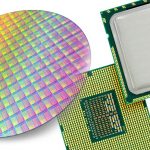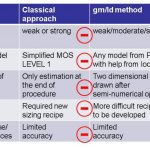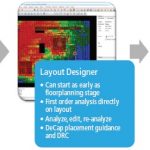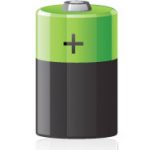You are currently viewing SemiWiki as a guest which gives you limited access to the site. To view blog comments and experience other SemiWiki features you must be a registered member. Registration is fast, simple, and absolutely free so please,
join our community today!
WP_Term Object
(
[term_id] => 157
[name] => EDA
[slug] => eda
[term_group] => 0
[term_taxonomy_id] => 157
[taxonomy] => category
[description] => Electronic Design Automation
[parent] => 0
[count] => 4369
[filter] => raw
[cat_ID] => 157
[category_count] => 4369
[category_description] => Electronic Design Automation
[cat_name] => EDA
[category_nicename] => eda
[category_parent] => 0
[is_post] =>
)
Migration to cloud computing for scientific and engineering applications is inevitable. More specifically for IC design, the benefits are significant:
- Common IC design infrastructure to unburden each user from setting up and maintaining a separate infrastructure
- Cloud based IC design enables global collaboration among
…
Read More
I’ve worked with Solido for 5 years, and it’s been a pleasure to watch the world’s top semiconductor companies and foundries adopt Solido software for their SPICE simulation flows.
Sub-28nm design starts are accelerating, growing from 150 in 2012 to 900 this year. The move to sub-28nm design nodes is being driven by consumer electronic… Read More
Jasper at DACby Paul McLellan on 05-20-2014 at 6:55 pmCategories: EDA
Wait, didn’t Cadence just acquire Jasper. Why is there a Jasper at DAC post?
So the big event is lunch on Tuesday, on Treasure Island. For out of towners that is the island in the middle of the bay bridge (actually just half of it). Food trucks, awesome views of the bay, and really cool street performers. There will be street magic,… Read More
For the first time in DAC history there is an automotive track. Being a car person myself this is exciting news. I had a quick chat with Anne Cirkel, Vice Chair of DAC, and she sent me the following information to get us prepared for our week in San Francisco. The weather is going to be great so plan accordingly!
Ever increasing feature… Read More
The concept and use of virtual prototypes continues to grow each year in electronics design, mostly because it really does shorten product development cycles by allowing software engineers to start early debug and fix errors prior to production. Other useful benefits to virtual prototyping include software optimization, … Read More
Ever since I started talking about Virtual Fabrication I have mostly looked at it from the manufacturers’ perspective, where it has obvious benefits to develop and model new process technology. But what about the fabless design concept and indeed even the semiconductor IP world that has spawned from it as well? It seems that Virtual… Read More
Digital designers have used logic optimization and logic synthesis for decades as a means to produce more optimal designs with EDA tools. On the analog and transistor-level side of design the efforts to automatically optimize for speed or power have generally been limited to circuits with only a handful of transistors. These … Read More
Last year at DAC, we launched the RTL Signoff platform and our customers responded enthusiastically. We even had a few other EDA companies follow our lead. So what have we been up to since then?
Visit us at DAC this June and learn how we have expanded our industry leading RTL Signoff solutions to handle the next set of challenges in SoC… Read More
The power integrity (PI) of a system is an extremely important aspect to be looked at all levels – chip, package and PCB for overall reliability of the system. At the PCB level, a DC analysis, usually based on IR drop, must ensure that adequate DC voltage, satisfying all constraints of current density and temperature, is delivered… Read More
Low Power Designby Paul McLellan on 05-16-2014 at 9:08 pmCategories: EDA, MunEDA
So you want to do a low power design. Join the club. Who doesn’t? Today all designs are low power, it is the biggest constraint on what we can do on a chip. Power down; power domains, variable clock rates, mixed Vt libraries. Every trick is needed. And that is not even enough. We get to put our phones on charge each evening and there… Read More








Quantum Advantage is About the Algorithm, not the Computer